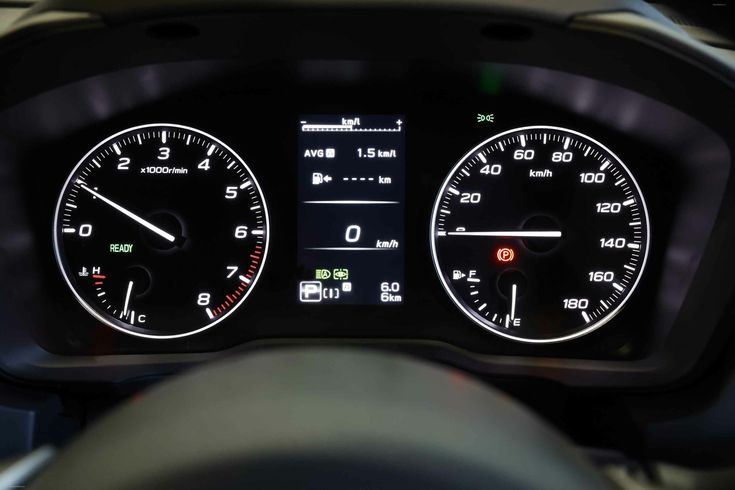Your car’s dashboard isn’t just a decorative display—it’s your vehicle’s way of sending you a secret code, like a digital Sherlock Holmes mystery. Each flashing light, icon, or gauge is a clue to your car’s health and needs. Knowing what these signals mean can save you from awkward roadside calls and hefty repair bills. Let’s uncover the hidden messages behind your dashboard signals in the most entertaining way possible—and what to do about them!
1. Check Engine Light
Think of the check engine light (CEL) as your car’s emoji for “I’m feeling off today.” It could mean something simple, like “Hey, tighten that gas cap,” or something serious, like “Uh-oh, the oxygen sensor is acting up.”
What to Do: If it’s a steady glow, check for obvious issues like a loose gas cap and schedule a service soon. If it’s flashing, pull over safely and call a mechanic—continuing to drive could cause serious engine damage.
2. Oil Pressure Warning Light
The oil can icon isn’t an invite to an old-timey mechanic’s shop—it’s a cry for help. Low oil pressure means your engine isn’t getting its silky-smooth lubrication, and ignoring it could turn your engine into a very expensive paperweight.
What to Do: Stop immediately, check your oil level, and top it up if necessary. If the light stays on, call for roadside assistance or head to a mechanic—don’t risk driving further.
3. Battery Alert Light
When the battery light pops up, it’s like your car saying, “My energy is draining faster than your smartphone on 1%.” It could be an alternator issue or a loose connection.
What to Do: Turn off non-essential electrical components (like the radio or AC) and drive to the nearest repair shop. If the car stalls, you’ll likely need a jump start to get moving again.
4. Brake System Warning Light
This icon might be an exclamation mark inside a circle or the word “BRAKE”—basically, it’s your car’s way of saying, “Don’t mess with me!” Maybe the parking brake is on, or maybe your brake fluid’s running low.
What to Do: First, ensure the parking brake is fully released. If the light remains on, check the brake fluid level. Persistent issues? Head straight to a mechanic—faulty brakes are not negotiable.
5. Tire Pressure Monitoring System (TPMS) Light
This horseshoe with an exclamation point is your car’s passive-aggressive reminder that your tires need some TLC. Low pressure isn’t just a fuel-efficiency killer; it’s a tire-damage time bomb.
What to Do: Use a tire pressure gauge to check the pressure of all tires and inflate them to the recommended levels found in your owner’s manual or on the door jamb sticker.
6. Coolant Temperature Warning Light
The thermometer-on-waves icon isn’t a pool party invite; it’s a signal that your engine’s hotter than a summer sidewalk.
What to Do: Pull over, turn off the engine, and let it cool down. Once cool, check the coolant level and add coolant if needed. If overheating persists, call for assistance—driving an overheated car can cause major engine damage.
7. ABS (Anti-lock Braking System) Warning Light
When this light comes on, it’s your car’s way of saying, “Hey, my fancy anti-skid magic isn’t working right now.”
What to Do: Regular brakes will still work, but ABS won’t engage during sudden stops or slippery conditions. Get the system inspected at your earliest convenience for peace of mind.
8. Airbag Warning Light
That seated person with a circle in front? They’re not meditating; they’re warning you about an airbag issue.
What to Do: Schedule a diagnostic check to pinpoint the problem. Airbags are a critical safety feature, so don’t delay repairs.
9. Traction Control Light
A car with squiggly lines behind it? That’s traction control telling you, “I’ve got this,” when roads get slippery. But if it stays lit, it means, “You’re on your own, pal.”
What to Do: You can continue driving cautiously, but without traction control, you’ll need to be extra careful on wet or icy roads. Get the system inspected if the light doesn’t go off.
10. Fuel Indicator Light
The gas pump icon is your dashboard’s equivalent of “You’re running on empty.”
What to Do: Find the nearest gas station and refuel. Pro tip: Don’t wait until the last minute—it’s not good for your fuel pump.
11. Service Required Light
This wrench or “SERVICE” light isn’t about emergencies; it’s more of a nudge, saying, “Time for some routine TLC.”
What to Do: Check your owner’s manual or vehicle logs to see what maintenance is due. It could be as simple as an oil change or a more detailed inspection.
12. Door Ajar Light
When the door ajar light comes on, it’s your car’s polite way of saying, “Close me, please!”
What to Do: Stop and check all doors, the trunk, and the hood. Give them a good push to make sure they’re securely closed.
13. Stability Control Light
A car with curved skid marks underneath? That’s your stability control saying, “Something’s off balance here.”
What to Do: Drive cautiously and get the system checked out soon. Stability control is essential for maintaining control, especially in challenging driving conditions.
14. High Beam Indicator
That blue headlight icon is your high beam’s humblebrag.
What to Do: Flick it off when other cars approach to avoid blinding oncoming traffic. High beams are best for dark, empty roads.
Why Knowing These Signals Matters
Your car’s dashboard is like a secret language of icons, lights, and gauges. Mastering it isn’t just about keeping your car in tip-top shape; it’s about avoiding awkward moments like “Why is my car smoking?” or “How did I miss that tow truck fee?” The next time your dashboard lights up, channel your inner detective, decode the mystery, and take action. After all, a well-informed driver is a happy driver—and your car will thank you for it!
